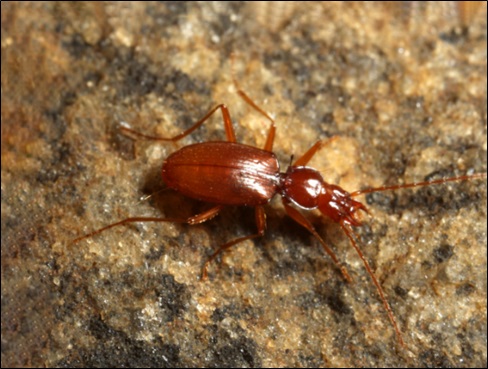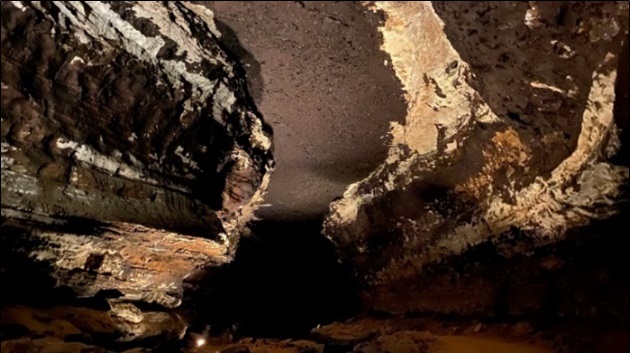Surprising Cave Beetle
ENTFACT-711: Surprising Cave Beetle | Download PDF
BY Morgan C. Knutsen, Graduate research assistant
Jonathan L. Larson, Extension entomologist
Fast Facts
- The surprising cave beetle is endemic to Mammoth Cave National Park, Kentucky.
- While not federally listed as endangered, conservation groups consider this species to be critically imperiled or threatened.
The surprising cave beetle (Figure 1) is one of many cave dwelling insects that can be found within Mammoth Cave National Park, Kentucky. About 1/8th of an inch in length, these are tiny, eyeless beetles that are adapted to live in dark and damp cave conditions (nps.gov). Little is known about this beetle’s behavior or life history.

Life History
Surprising cave beetles are ground beetles found in the family Carabidae. The surprising cave beetle belongs to a genus of beetles, Psuedanophthalmus, that contains the most diverse group of cave beetles in the United States (caves.org). There are currently over 140 described species and no less than 40 species new to science that are waiting to be taxonomically described (caves.org). Cave ground beetles are typically eyeless, flightless, and depigmented usually resulting in an amber coloration (caves.org) as a result of living in a dark cave habitat (Figure 2). These species typically have long legs and antennae which allows for increased sensation in dark caves. The surprising cave beetle is considered troglobitic, which means that they are suited to surviving in subterranean habitats, including caves (esa.org). These beetles are predatory and feed on the eggs of other insects, springtails, millipedes, small worms, and other arthropods (caves.org).
Habitat
Known to occur in Kentucky specifically endemic in Mammoth Cave National Park and surrounding caves in the park (nps.gov).

Conservation Status
This species is currently not federally listed however they are considered critically imperiled or threatened (explorer.natureserve.org). In 2001, the U.S. Fish and Wildlife Service (FWS) petitioned to list the surprising cave beetle as endangered or threatened (ecos.fws.gov). In 2007, the FWS determined that listing was not necessary due to there being “no portion of its range for which […] there was information that the species may be locally threatened” (Federal register 06 Dec 2007). Other organizations like the Biological Center for Biodiversity continuously dispute this and petition for the surprising cave beetle to be listed as an endangered species.
Threats
Due to their endemism, this population is extremely vulnerable to changes in their climate or alterations to their habitats. According to the Nature Serve, one population declined greatly after wooden debris, that assisted in maintaining the food chain, had been removed from the cave. Beetles fed on the insects that interacted with the decaying wood and therefore the removal of the wood took away this species food source. After the removal of the wooden debris some years ago, the surprising cave beetle has not been observed since (Center for Biological Diversity, explorer.natureserve.org). Other factors including climate change and pollution also play a role in the decline of this species.
Significance
Cave insects are incredibly diverse and have evolved multiple adaptations that allow them to live in a habitat surrounded by complete darkness and low resources. If we take steps to conserve the surprising cave beetle, this will allow for additional protection of other cave insects protecting biological diversity.
What Can I Do?
Spreading awareness of the conservation of cave insects is critical in protecting them. When visiting cave systems reduce your impact. Do not litter or take anything from the environment.

Issued: 02/24
CAUTION! Pesticide recommendations in this publication are registered for use in Kentucky, USA ONLY! The use of some products may not be legal in your state or country. Please check with your local county agent or regulatory official before using any pesticide mentioned in this publication.
Of course, ALWAYS READ AND FOLLOW LABEL DIRECTIONS FOR SAFE USE OF ANY PESTICIDE!
